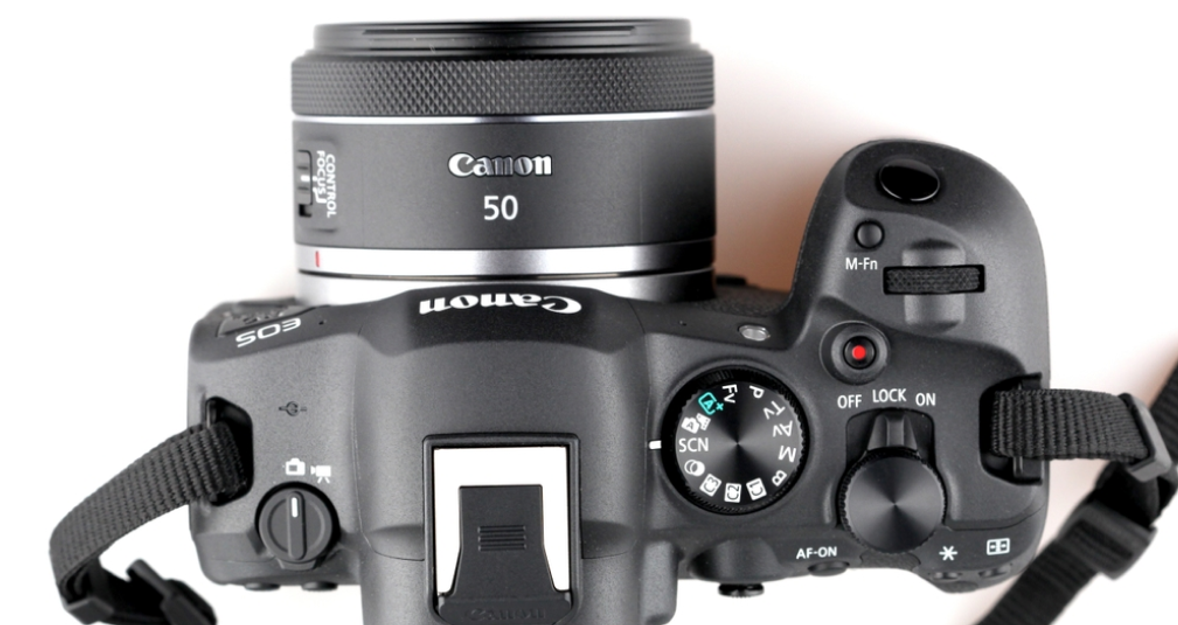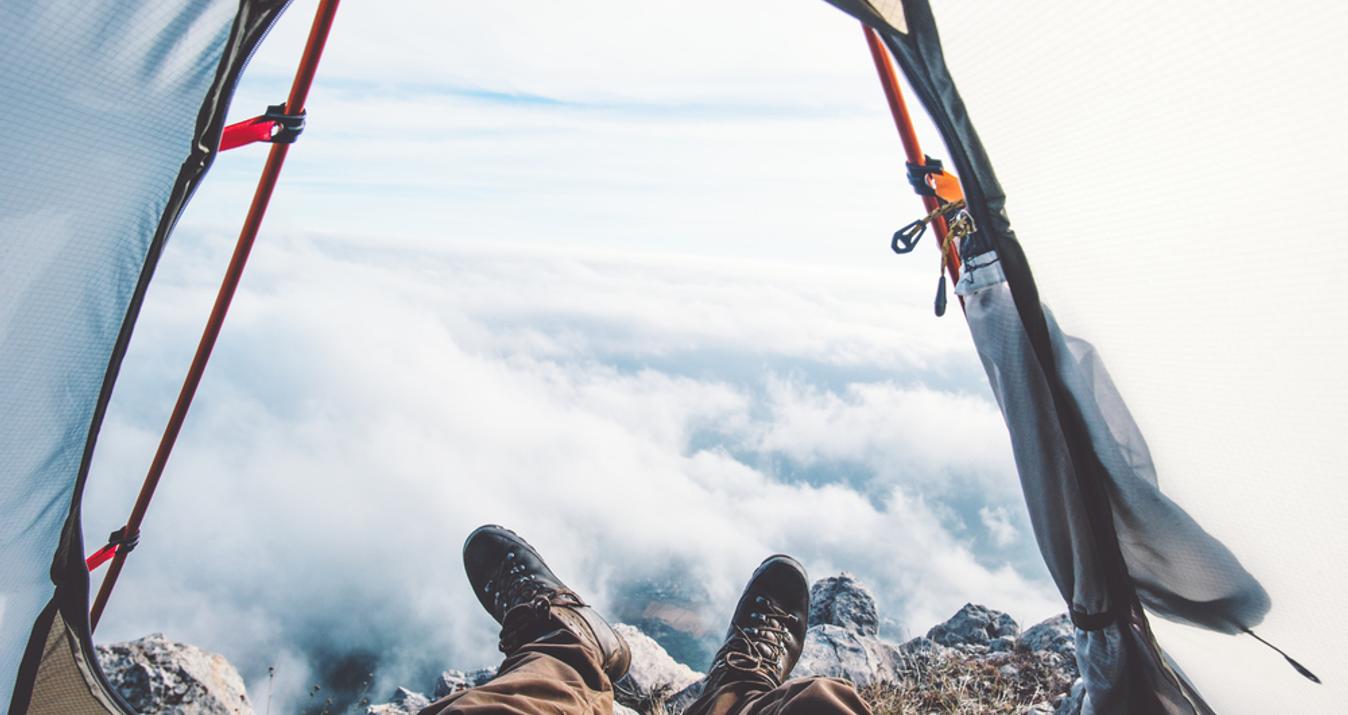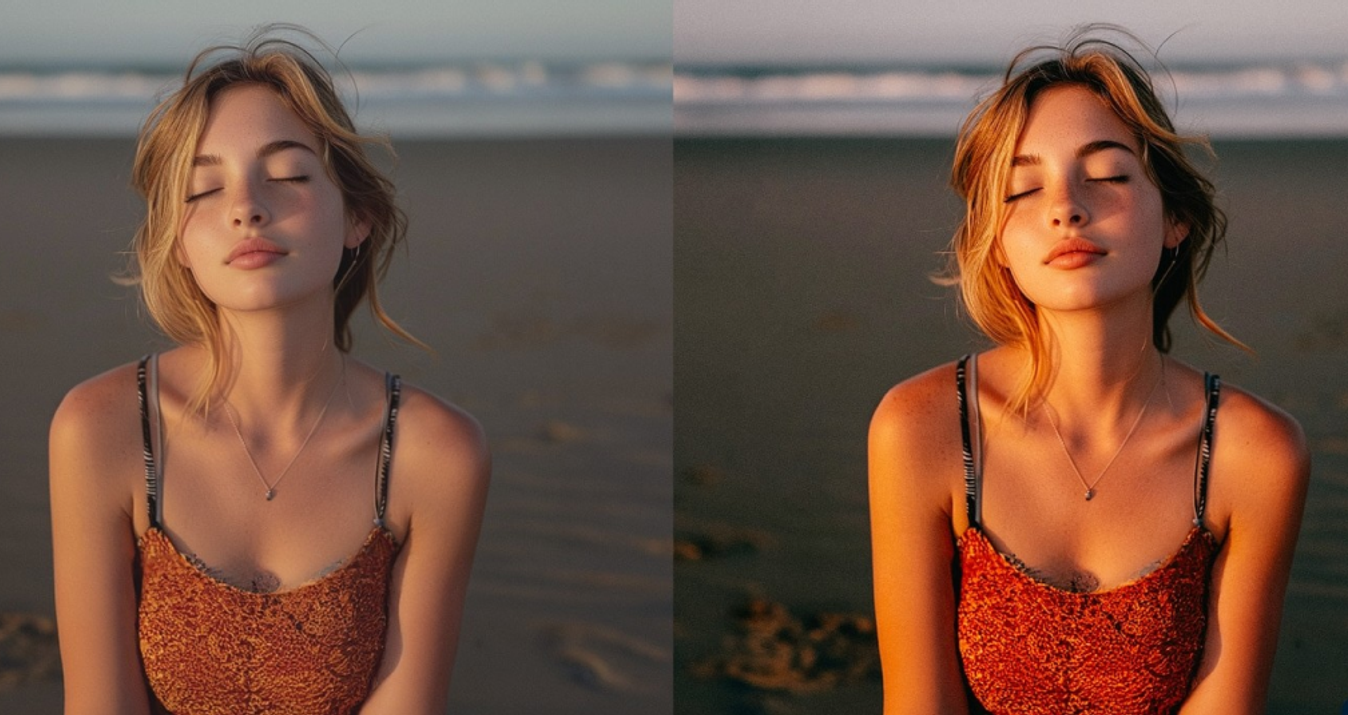Best Mirrorless Camera: Top Picks for Every Photographer
Last Updated on September 19, 2025

Looking for the best mirrorless camera? Check out our top 10 models perfect for beginners and pros, with great image quality and portability.
Compact, lightweight, and powerful, mirrorless cameras are changing the way we shoot. By removing the mirror found in traditional DSLRs, they deliver portability without sacrificing image quality. With advanced video capabilities, fast autofocus, and real-time previews, they’ve become the go-to choice for photographers and videographers at every level.
In this article, we’ll take a closer look at the 10 best mirrorless cameras available right now to help you find the perfect match for your creative needs.
Read more: Mirrorless vs DSLR: Pros and Cons for Making an Informed Camera
Selecting the Best Mirrorless Camera
Important Factors to Consider
 The best mirrorless camera for you really depends on how you shoot. If your passion is capturing fast-moving subjects, then autofocus speed and subject tracking will be far more important than megapixels. Landscape photographers, on the other hand, benefit most from high resolution and wide dynamic range to bring out every detail in large prints. When shooting in unpredictable conditions or without a tripod, in-body image stabilization becomes a lifesaver, while burst mode is essential for sports, wildlife, or any kind of action.
The best mirrorless camera for you really depends on how you shoot. If your passion is capturing fast-moving subjects, then autofocus speed and subject tracking will be far more important than megapixels. Landscape photographers, on the other hand, benefit most from high resolution and wide dynamic range to bring out every detail in large prints. When shooting in unpredictable conditions or without a tripod, in-body image stabilization becomes a lifesaver, while burst mode is essential for sports, wildlife, or any kind of action.
For creators who rely on video, from vloggers to hybrid shooters, a strong video pipeline is non-negotiable. Travel photographers will appreciate cameras that are compact, durable, and comfortable to carry all day. Event and street photographers should also look for practical features like full-size HDMI, mic and headphone jacks, and dual card slots for peace of mind. Finally, never overlook the lens ecosystem. Native glass, third-party support, and even rental availability can make a huge difference in how flexible your setup will be in the long run.
Your AI-Powered Photo Editor for MacOS and Windows
Discover Now!Which Sensor is Right for You?
 Full-frame sensors offer the best image quality. They work in low light and provide a shallow depth of field. APS-C sensors provide a good balance of quality, size, and affordability. Their crop factor is ideal for moving objects and wildlife shots. Micro Four Thirds sensors are the smallest and most lightweight. They support a wide range of lenses, but do not perform well in dim environments.
Full-frame sensors offer the best image quality. They work in low light and provide a shallow depth of field. APS-C sensors provide a good balance of quality, size, and affordability. Their crop factor is ideal for moving objects and wildlife shots. Micro Four Thirds sensors are the smallest and most lightweight. They support a wide range of lenses, but do not perform well in dim environments.
Read more: Full Frame vs Micro 4/3 Main Differences.
Mirrorless Camera Comparison: Features to Look For
When you compare shortlists, handle the cameras if you can. Raise them to the eye, switch AF modes, plug in a mic. Pay attention to the essential parts of the camera: viewfinder, shutter release, display, mode dial, and lens mount. Weigh your options in relation to these criteria:
EVF & LCD: Detailed electronic viewfinders refresh quickly enough to avoid lagging during motion; articulated screens make it easier to shoot from lower angles and take selfies.
Controls: For settings like ISO, shutter speed, and aperture, you get dedicated dials, along with customizable buttons to streamline the operation.
Stabilization Features: Look for built-in stabilization, boost/active recording modes, and progressive horizon correction, if available.
Video Capabilities: Your device should ideally include high-resolution and high frame rate recording. Consider internal RAW/ProRes codecs, log profiles, and external audio inputs.
Special Photography Modes: Pixel shift, handheld high resolution, pre-shutter capture, and shoot without blackout are all occasionally useful.
Durability: Double card slots and heavy-duty weather-sealing can be more important than standout features.
Best Mirrorless Cameras: Top Options by Category
1. Sony A7 IV — Best Overall Mirrorless Camera
 The Sony A7 IV is widely regarded as one of the best all-around mirrorless cameras on the market. Its 33MP full-frame sensor delivers excellent image quality, while the advanced AI-powered autofocus system can reliably track humans, animals, and even birds. Videographers will appreciate the 4K 10-bit recording with support for S-Log3 and HLG, making it a strong choice for professional workflows.
The Sony A7 IV is widely regarded as one of the best all-around mirrorless cameras on the market. Its 33MP full-frame sensor delivers excellent image quality, while the advanced AI-powered autofocus system can reliably track humans, animals, and even birds. Videographers will appreciate the 4K 10-bit recording with support for S-Log3 and HLG, making it a strong choice for professional workflows.
Beyond image quality, the A7 IV is built for versatility: it offers in-body image stabilization, 10fps continuous shooting, and dual card slots (one CFexpress Type A and one SD) for added flexibility. The robust battery life and weather-sealed body ensure it performs just as well in extreme outdoor conditions as it does in the studio, making it a dependable hybrid camera for photographers and videographers alike.
Reasons to buy | Reasons to avoid |
Excellent low-light capabilities | Rolling shutter |
Dual card slots | No bulb timer |
Good heat management | Large file sizes compared to competitors |
In-body image stabilization | Beginner-unfriendly menus |
Fully articulating touchscreen | Overheating |
2. Panasonic Lumix S5 II — Best Mirrorless Camera for Video
 The Panasonic Lumix S5 II is built with videographers in mind. At its core is a full-frame CMOS sensor that delivers stunning 10-bit color, backed by a 779-point phase-detection autofocus system for reliable subject tracking. Its video performance is where it truly shines: the S5 II supports 6K 30p and 4K 60p 10-bit recording with no time limits, making it a powerhouse for long shoots and professional productions.
The Panasonic Lumix S5 II is built with videographers in mind. At its core is a full-frame CMOS sensor that delivers stunning 10-bit color, backed by a 779-point phase-detection autofocus system for reliable subject tracking. Its video performance is where it truly shines: the S5 II supports 6K 30p and 4K 60p 10-bit recording with no time limits, making it a powerhouse for long shoots and professional productions.
The camera also features a crisp 3.68M-dot OLED viewfinder and a fully articulating 3-inch 1.84M-dot vari-angle LCD screen, perfect for framing from any angle. Dual UHS-II SD card slots ensure flexible storage options and secure backups. With this balance of image quality, advanced autofocus, and professional-grade video tools, the Lumix S5 II is an excellent choice for creators who prioritize video without sacrificing stills.
Reasons to buy | Reasons to avoid |
Top-notch quality for stills and videos | Not catered to fast-moving objects |
Intuitive controls and features | Long processing |
Full-size HDMI socket | Dull JPEGs |
Multi-shot mode | Short battery life |
Good for handheld shooting at slow shutter speeds | Short but noticeable delay before shooting with telezoom lenses |
3. Nikon Z8 — Best Mirrorless Camera for Photography
 The Nikon Z8 is a powerhouse designed for photographers who demand top-tier performance. It features a 45.7MP full-frame stacked CMOS sensor paired with a 493-point AI-based autofocus system, delivering sharp, detailed images and precise subject tracking. For video shooters, the Z8 supports 8K/60p N-RAW (12-bit) recording, proving its versatility beyond stills.
The Nikon Z8 is a powerhouse designed for photographers who demand top-tier performance. It features a 45.7MP full-frame stacked CMOS sensor paired with a 493-point AI-based autofocus system, delivering sharp, detailed images and precise subject tracking. For video shooters, the Z8 supports 8K/60p N-RAW (12-bit) recording, proving its versatility beyond stills.
Nikon has long been regarded as one of the best camera brands for high-quality photography, and the Z8 only strengthens that reputation. It can capture up to 20 fps in RAW and an impressive 30 fps in JPEG, making it ideal for action and wildlife. The 5-axis in-body image stabilization provides up to 5.5 stops of compensation, ensuring steady shots in any situation.
A 3.2-inch 4-axis tilting touchscreen LCD and dual memory card slots (CFexpress Type B and SD) add both flexibility and convenience. Dependable, multi-functional, and user-friendly, the Nikon Z8 is a standout choice for photographers of all experience levels.
Reasons to buy | Reasons to avoid |
No limitations on burst speed for third-party lense | Limited dynamic range |
Blackout-free real live viewfinder | Large and heavy |
In-body vibration reduction | Limited screen tilt options |
Robust autofocus with AI-based subject tracking | High ISO performance lags |
Abundant physical controls and high customizability | Limited battery capacity. |
4. Canon EOS R10 — Best Entry-Level Mirrorless Camera
 This model offers impressive speed for its class, with a maximum continuous shooting rate of 23fps using the electronic shutter or 15fps with the mechanical one. Its 24.2MP APS-C sensor is paired with an advanced autofocus system capable of tracking humans, animals, and even vehicles with precision. On the video side, it records 4K at 30p in full-frame mode or 60p with a crop, making it a flexible option for both photographers and content creators. The mirrorless camera reviews consistently highlight it as one of the best budget-friendly choices on the market, delivering strong performance without breaking the bank.
This model offers impressive speed for its class, with a maximum continuous shooting rate of 23fps using the electronic shutter or 15fps with the mechanical one. Its 24.2MP APS-C sensor is paired with an advanced autofocus system capable of tracking humans, animals, and even vehicles with precision. On the video side, it records 4K at 30p in full-frame mode or 60p with a crop, making it a flexible option for both photographers and content creators. The mirrorless camera reviews consistently highlight it as one of the best budget-friendly choices on the market, delivering strong performance without breaking the bank.
Reasons to buy | Reasons to avoid |
Affordable price | No in-body image stabilization |
Compact and lightweight design | Slim shot buffer |
Auto-rotate feature for vertical videos | A single card slot |
Pop-up flash | Limited lens selection |
Dual control dials and an AF joystick | No headphone jack |
5. Fujifilm X-T5 — Best Compact Mirrorless Camera
 The Fujifilm X-T5 is one of the best-rated mirrorless cameras for photographers who value ergonomics and portability without compromising on performance. Its standout feature is the 40MP APS-C X-Trans CMOS 5 HR sensor, which delivers remarkable image quality and detail.
The Fujifilm X-T5 is one of the best-rated mirrorless cameras for photographers who value ergonomics and portability without compromising on performance. Its standout feature is the 40MP APS-C X-Trans CMOS 5 HR sensor, which delivers remarkable image quality and detail.
Stability is another strong point, thanks to the 5-axis in-body image stabilization system. The camera also offers a 3.69m-dot electronic viewfinder, dual card slots, and a three-way tilting LCD for flexible shooting angles.
On the video side, the X-T5 supports 6.2K/30p 4:2:2 10-bit internal recording with F-Log2, giving creators professional-grade options. Compact yet powerful, it’s a perfect choice for those who want a lightweight body packed with advanced features.
Reasons to buy | Reasons to avoid |
Compact and lightweight design for shooting on the go | Top dials can sometimes clog with sand or dirt |
Beginner-friendly dials and buttons | Large lenses do not balance well |
19 Film Simulation modes | Crop modes used for digital zoom are not saved in RAW files |
RAW video output via HDMI | Small sensor |
Expanded dynamic range | Autofocus subject tracking is worse than in many competitors |
6. Nikon Z6 III — Best Mid-Range Mirrorless Camera
 According to mirrorless cameras reviews, the Nikon Z6 III is an excellent choice for night and event photography. It handles high ISO exceptionally well, meaning users rarely need additional software for noise reduction. At its core is a 24.5MP full-frame partially stacked CMOS sensor, which ensures faster readout speeds compared to earlier models.
According to mirrorless cameras reviews, the Nikon Z6 III is an excellent choice for night and event photography. It handles high ISO exceptionally well, meaning users rarely need additional software for noise reduction. At its core is a 24.5MP full-frame partially stacked CMOS sensor, which ensures faster readout speeds compared to earlier models.
On the video side, the Z6 III offers impressive in-camera options, including 6K/60p N-RAW recording and 4K UHD video at up to 120p. Photographers also appreciate the bright 5.76M-dot electronic viewfinder with a DCI-P3 color gamut, which provides accurate colors and a highly immersive shooting experience.
Balanced between performance and price, the Nikon Z6 III stands out as a dependable mid-range mirrorless camera for both stills and video.
Reasons to buy | Reasons to avoid |
High-end autofocus capabilities | High price |
Advanced internal video recording | Battery charger is not included |
Pre-release capture for action shots | Struggles with capturing fine textures |
Ergonomic design | Video autofocus is worse than in some competitors |
Nikon Imaging Cloud integration | Potential minor dynamic range trade-offs |
7. Sony A7R V — Best High-Resolution Mirrorless Camera
 The Sony A7R V is designed for photographers who demand extreme detail. Its 61MP BSI CMOS sensor delivers exceptional resolution, making it one of the best choices for landscapes, studio work, and large prints. To keep those high-resolution shots sharp, the camera features an 8.0-stop in-body image stabilization system that minimizes blur, even when shooting handheld.
The Sony A7R V is designed for photographers who demand extreme detail. Its 61MP BSI CMOS sensor delivers exceptional resolution, making it one of the best choices for landscapes, studio work, and large prints. To keep those high-resolution shots sharp, the camera features an 8.0-stop in-body image stabilization system that minimizes blur, even when shooting handheld.
Video creators also benefit from strong specs: the A7R V records 8K/24p and 4K/60p video (with a 1.24x crop), giving it solid versatility for hybrid shooting. For action, the camera offers continuous shooting at up to 10fps, ensuring you never miss a decisive moment.
The autofocus system is another highlight — with 693 phase-detection points powered by advanced AI, it provides fast, accurate subject tracking. A fully articulated screen rounds out the package, offering flexibility for creative angles and video work. With its unmatched resolution and professional features, the Sony A7R V is a powerhouse for detail-oriented photographers.
Reasons to buy | Reasons to avoid |
AI-driven autofocus system | High price |
Flexible RAW file size options | Short battery life |
Excellent low-light performance | RAW processing inconsistencies |
"Shutter off when closed" feature | Complex menu |
Focus bracketing mode | Firmware update issues |
8. Sony A6100 — Best Budget Mirrorless Camera
 The Sony A6100 is an excellent budget camera that still delivers reliable performance for both beginners and enthusiasts. It comes equipped with a 24.2MP Exmor CMOS sensor and a fast, intelligent autofocus system capable of tracking humans, animals, and even moving vehicles. With 425 phase-detection and 425 contrast-detection AF points, plus real-time Eye AF for both people and pets, it ensures sharp focus in almost any situation.
The Sony A6100 is an excellent budget camera that still delivers reliable performance for both beginners and enthusiasts. It comes equipped with a 24.2MP Exmor CMOS sensor and a fast, intelligent autofocus system capable of tracking humans, animals, and even moving vehicles. With 425 phase-detection and 425 contrast-detection AF points, plus real-time Eye AF for both people and pets, it ensures sharp focus in almost any situation.
For action shooters, the A6100 offers continuous shooting at up to 11fps, making it more capable than many other cameras in its price range. It also includes a 1.44M-dot electronic viewfinder and a 3-inch tiltable touchscreen LCD, giving users flexible framing options. Compact, affordable, and packed with features, the Sony A6100 is one of the strongest choices for anyone seeking a dependable entry-level mirrorless camera.
Reasons to buy | Reasons to avoid |
4K video recording | Limited touchscreen capabilities |
Handles the ISO up to 32000 for videos and 51200 for photos. Perfect for uneven and insufficient lighting conditions | Low-quality viewfinder and screen |
Compact design for travel photos and shooting on the go | No dedicated shutter speed dial |
Affordable price for users with tight budgets | No weather sealing |
Easy to use, beginner-friendly | Plastic body is less durable |
9. Canon EOS R5 II — Best Professional Mirrorless Camera
 The Canon EOS R5 II is a true powerhouse aimed at professionals who need both speed and precision. At its core is a 45MP full-frame stacked CMOS sensor, paired with Canon’s advanced Dual Pixel Intelligent autofocus system. Powered by deep learning AI algorithms, the AF delivers reliable eye tracking and exceptional subject recognition, even in demanding environments.
The Canon EOS R5 II is a true powerhouse aimed at professionals who need both speed and precision. At its core is a 45MP full-frame stacked CMOS sensor, paired with Canon’s advanced Dual Pixel Intelligent autofocus system. Powered by deep learning AI algorithms, the AF delivers reliable eye tracking and exceptional subject recognition, even in demanding environments.
For video creators, the R5 II is equally impressive, supporting 8K/60p RAW recording for cinematic-quality results. Photographers benefit from a blazing 30 fps continuous shooting mode, ensuring no moment is missed.
The camera also features a 5.76M-dot OLED electronic viewfinder, a 3.2-inch vari-angle touchscreen LCD, and dual memory card slots for CFexpress and SD — all designed to meet the needs of working professionals. With its blend of high resolution, speed, and advanced autofocus, the Canon EOS R5 II stands as one of the most capable professional mirrorless cameras available today.
Reasons to buy | Reasons to avoid |
8-stop in-body image stabilization for ultimate quality | Limited battery capacity |
3.2-inch vari-angle touchscreen LCD for flexible shooting | Color shift at high ISO values when working with RAW files |
Dual memory card slots (one UHS-II SD and one CFexpress Type B | Slightly lower dynamic range compared to some advanced competitors |
Fanless design for high video specs | High price |
Multi-function hot shoe | Eye control system limitations |
10. Olympus OM-D E-M10 Mark IV — Best Mirrorless Camera for Beginners
 The Olympus OM-D E-M10 Mark IV is one of the most approachable mirrorless cameras for new photographers. It features a 20.3MP 4/3” Live MOS sensor and is fully compatible with the wide range of Micro Four Thirds lenses, giving beginners plenty of flexibility to grow their kit over time.
The Olympus OM-D E-M10 Mark IV is one of the most approachable mirrorless cameras for new photographers. It features a 20.3MP 4/3” Live MOS sensor and is fully compatible with the wide range of Micro Four Thirds lenses, giving beginners plenty of flexibility to grow their kit over time.
To help capture sharp shots, the camera includes a 5-axis in-body image stabilization system that compensates for up to 4.5 stops of camera shake — especially useful for handheld shooting. Video creators aren’t left out either, with 4K recording at 30p available right out of the box.
Other highlights include a 2.36M-dot electronic viewfinder and a 3-inch tiltable touchscreen LCD, both of which make composing and reviewing images simple and intuitive. Lightweight, versatile, and easy to use, the OM-D E-M10 Mark IV is a perfect entry point into the world of mirrorless photography.
Reasons to buy | Reasons to avoid |
Compact and lightweight | No microphone port |
Excellent color production straight from JPEGs | Fragile plastic body |
The in-body image stabilization system allows for handheld shooting and smooth videos | Small sensor |
Flip-down monitor, ideal for selfies, vlogging, and shooting at awkward angles | No USB-C port |
Beginner-friendly shooting modes | No phase detect autofocus |
Why Luminar Neo is Ideal for Mirrorless Camera Users
Post-processing of images is essential to improve attributes such as exposure, color, and texture. Users can take full advantage of the camera sensors’ data. They can enhance detail and sharpen images even if they were captured in challenging environments.
Luminar Neo is an AI-powered all-in-one photo editor. It simplifies complex post-processing tasks using artificial intelligence algorithms. Its toolkit particularly includes skin retouching, sky replacement, and background removal. Users can enhance detail and sharpness from various sensor sizes and achieve high-quality results.
Conclusion
 Choosing the best mirrorless camera ultimately depends on what and how you like to shoot. Start by thinking about your subjects and environment — fast action, low light, travel, or studio work — and use that as a framework for deciding on sensor size, autofocus performance, stabilization, and video features.
Choosing the best mirrorless camera ultimately depends on what and how you like to shoot. Start by thinking about your subjects and environment — fast action, low light, travel, or studio work — and use that as a framework for deciding on sensor size, autofocus performance, stabilization, and video features.
The models we’ve highlighted above cover every need: from hybrids and all-rounders to video specialists, high-resolution stills cameras, budget-friendly picks, and compact travel companions. Remember, the camera body is the heart of your imaging system, but it’s only part of the equation. Lenses, memory cards, power supplies, and post-processing workflows all shape your final results.
Take a consistent, thoughtful approach to your gear and shooting style, and you’ll be rewarded with cleaner images, steadier footage, and photos that truly reflect your creative vision.
FAQ
What Accessories Are Essential?
Stabilization equipment and gimbals are essential for stability. Extra batteries and memory cards, lens filters, a camera backpack, and a cleaning kit will keep your camera running longer.
Are Mirrorless Cameras Good for Professional Photography?
Yes. Many pros have made the switch to mirrorless cameras because they’re more capable, flexible, and constantly improving. Mirrorless cameras are the best options, particularly for travel, sports, and event photography.
What Are the Main Advantages of Mirrorless over DSLR?
Mirrorless cameras are compact and lightweight. They include more advanced autofocus systems and video features. Their electronic viewfinders allow for real-time previews.
Which Model Is Best for Beginners?
The Canon EOS R10 offers a great combination of performance and accessibility. The Olympus OM-D E-M10 Mark IV is also suggested for beginners, as it has a very low price and basic shooting modes intended for amateurs.
What Is the Best Mirrorless Camera?
The one that meets your needs, budget and style of shooting. Consider image stabilization, autofocus, sensor type, ergonomics, and build quality.





